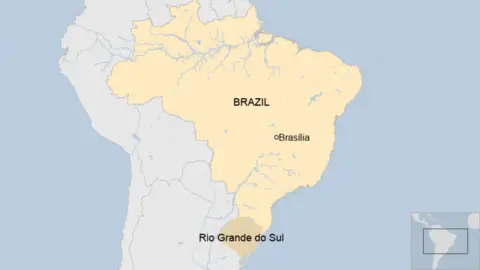Massive flooding and landslides triggered by days of heavy rain in Brazil’s southernmost state have killed 56 people. Officials say another 67 people are missing in Rio Grande do Sul.
Nearly 25,000 residents have been forced to leave their homes since the storms began last Saturday. At least half a million were without power and clean water, with further rainfall expected. The extreme weather has been caused by a rare combination of hotter than average temperatures, high humidity and strong winds.
More than half of the 497 cities in the state have been affected by the storms, with roads and bridges destroyed in several areas. The storms also caused landslides and the collapse of a hydroelectric dam near the city of Bento Gonçalves, killing 30 people.
A second dam in the area was also at risk of collapsing due to rising water levels, authorities said. In Porto Alegre, the regional capital, the Guaiba river broke its banks, flooding streets and submerging some neighbourhoods.
Porto Alegre’s international airport has suspended all flights for an “undetermined” period. One resident said the damage was “heart breaking”. “I live in this area, so I feel sorry for everyone who lives here. It’s very sad, and it’s regrettable that all this is happening,” Maria Luiza told the BBC.
What is El Niño and how does it change the weather?
Brazilian President Luiz Inácio Lula da Silva has visited the region, promising help from the central government.
Meteorologists have predicted further rains to fall in the region as a cold front moves across it.
Last year, more than 30 people were killed in a cyclone in Rio Grande do Sul.
Brazil’s National Institute of Meteorology attributed the increased intensity and frequency of rainfall to the climate phenomenon El Niño.
